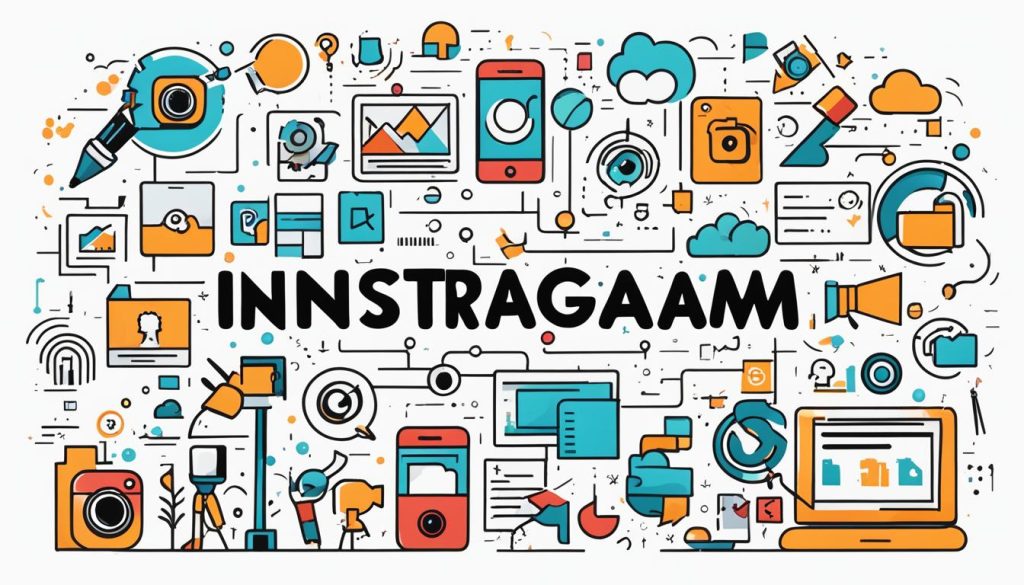In an ever-evolving digital marketplace, your business’s performance hinges on the prowess of your marketing funnel. Grasping the art of funnel optimization can markedly augment your conversion rates, transforming prospects into staunch advocates for your brand. Strategically positioning your CTA and fine-tuning your engagement strategies can set you apart from the competition, catalysing growth at every interaction.
As you navigate through the dense thicket of online distractions, it’s imperative to sculpt a customer journey that’s not only efficient but also enjoyable. Every touchpoint should lead your audience deeper into the funnel with ease and purpose. This is the bedrock of effective business performance in the digital age.
Key Takeaways
- Mastering funnel optimization is key to improving your brand’s conversion rates.
- Effective CTA placement is a critical factor in steering potential customers through your sales funnel.
- Robust engagement strategies are paramount for maintaining interest and encouraging conversions.
- Optimised customer journeys are crucial for enhancing business performance online.
- Strategic marketing initiatives can significantly bolster your funnel’s efficiency and efficacy.
Understanding the Fundamentals of Brand Funnel Dynamics
Delving into the complexities of the digital marketplace, it becomes apparent that a strong marketing strategy is vital for standing out in the crowded online arena. Mastering the effectiveness of a brand funnel demands rigorous attention to user experience, ensuring all facets of brand alignment are harmonised with your audience’s expectations.

Establishing Brand Awareness in a Saturated Digital Ecosystem
Amidst the ever-expanding digital ecosystem, content marketing emerges as a powerful marketing tool, capable of cutting through the noise of ad saturation. By focusing on engagement percentages and providing value, you actively participate in nurturing the customer relationship, positioning your brand as more than just a name, but as a source of reliable information and solutions.
The Transition from Brand Recognition to Consideration
The journey from recognising a brand to giving it serious consideration is complex, and should not fall prey to the allure of vanity metrics. A targeted approach, underpinned by insightful user behaviour analysis, ensures that your content resonates more deeply with potential customers, earning their trust and paving the way for solid consideration in the decision-making process.
The Role of Conversion Rate Optimisation in Funnel Efficiency
To convert aware and interested audiences into action-takers, a keen emphasis on conversion optimization is critical. The utilisation of A/B testing, meticulous page layout, and responsive web design assists in creating a frictionless route towards conversion, enhancing the likelihood of a prospect moving through your funnel towards a definitive action.
| Marketing Focus Area | Objective | Key Tools |
|---|---|---|
| Brand Awareness | Establish a strong brand presence | Social Media, SEO, Content Marketing |
| Brand Consideration | Engage consumers on a deeper level | User Behaviour Analysis, Interactive Content |
| Conversion Rate Optimisation | Smooth transition from interest to action | Landing Page Design, A/B Testing, CTA Placements |
Strategies for Funnel Optimisation
To enhance your funnel’s performance, it’s essential to integrate a marketing strategy that employs psychological triggers to influence user behaviour. Accounting for the way people interact with your website is vital for funnel optimisation. This is where data like conversion tracking, heatmaps, and analyses of page performance can illuminate the path to increasing engagement and conversions.

Let’s look into the use of heatmaps, which visually represent user engagement such as clicks, scrolls, and attention on your site. These insights can help identify which sections are igniting interest and which are being overlooked. By understanding these patterns, you can arrange content and calls-to-action in a way that matches user behaviour, improving the overall effectiveness of your site.
By leveraging the power of psychological triggers in your content, you can lead visitors through a journey that’s not only logical but also emotionally resonant, significantly boosting your chances of conversion.
Moreover, continuous improvement should be a part of your ethos, involving repeated A/B split testing and user testing. This iterative process ensures that every touchpoint within the funnel is not merely functional but optimised for peak performance. To further elucidate this, here’s a breakdown of elements one must test for an optimised funnel:
| Element | Objective | Impact on Funnel |
|---|---|---|
| Headlines | Grab attention and interest | Higher engagement at the top of the funnel |
| Call-to-Action Buttons | Encourage clicks to next stage | Better conversion rates |
| Page Layout | Improve user experience | Enhanced usability and lowered bounce rates |
| Content Relevance | Connect with the audience | Increased time on site and interest in offering |
Remember, a successful funnel doesn’t just happen; it’s crafted through a blend of creative and analytical efforts focused on understanding and moulding user experience. Employ these strategies meticulously and you’re set to see significant improvements in your funnel performance.
Interpreting User Behaviour for Funnel Customisation
To sculpt a sales funnel that is not merely a conduit but a concierge to your consumers’ desires, one must delve into the analytical vault. Here lies the X-ray into your visitors’ minds—data that unravels the very fabric of user interaction with your digital presence and steers the curation of pathways aligned with their proclivities.
Analytics, the compass of navigation design, guides this exploration. It divulges patterns in user pathways, rendering a tailormade journey through your site. Together with the art of interaction design, you foster an environment ripe for consumer engagement.
Gleaning Insights from Analytics to Guide User Pathways
Analytics grant you the clairvoyance to discern not only where your users tarry but also where they hasten. Data underscores the walkthrough—from entry to exit—which permits you to align the digital pathway with the convenience and predictability that users cherish. Trends in user testing and analytics amalgamate, offering a clear directive: curate your content and navigation with the finesse of an interaction designer.
Applying Heatmaps to Understand Visitor Engagement
Heatmaps are the paintbrushes that illustrate where your theatre of engagement ignites visitors’ fervours and where it slips into the shadows. As a tapestry of colour denoting intensity, these maps are the silent narrators of visitor behaviour. Employ them to enhance user experience, incentivising engagement at every digital crossroad with precision that aligns with contemporary design trends.
| Element | Function | Visitor Engagement Insight | Design Trend |
|---|---|---|---|
| CTA Buttons | To prompt immediate response/action | High click concentration on heatmaps | Minimalist with bold contrasting colours |
| Navigation Bars | To simplify site exploration | Sequential heatmap trail indicating user’s pathway | Sticky headers with dropdown menus |
| Images | To attract and hold attention | Longer gaze duration on specific areas | High-resolution, authentic photography |
| Videos | To engage and educate users | Hotspots where play and pause occur | Embedded, autoplay with muted options |
As you entwine analytics and heatmaps, a storyboard of user behaviour unfolds, directing you not only in the architecture of the user journey but also the minutiae of the on-page experience. Your strategy, adaptive and informed by real-time data, advocates for an iterative approach to navigation design, guaranteeing the path you carve remains steadfast in the limelight of visitor engagement.
Design Principles and Their Impact on Funnel Effectiveness
Mastering the art of visual hierarchy within your web design dramatically enhances the effectiveness of your sales funnel. By strategically leveraging user-centric design principles and colour theory, it’s possible to tailor your page aesthetics for an optimal user experience.
Implementing Visual Hierarchy for a Seamless User Experience
The intentional structuring of visual hierarchy on a website guides users effortlessly towards important elements, resulting in a frictionless user journey. A strong visual hierarchy aligns with the user’s natural behaviour, ensuring that actionable cues are unmissable and persuasive.

CTA Button Design and Placement for Higher Click-Through Rates
CTA buttons are pivotal in steering user actions and boosting click-through rates. These buttons must be conspicuously designed, integrating aspects of button design such as size, shape, and colour to stand out and effectively catch the user’s eye.
| Element | Importance | User Experience Impact |
|---|---|---|
| Color Contrast | High | Increases visibility and draws attention to the CTA |
| Shape & Size | Medium | Encourages user interaction with the button |
| Placement | Critical | Determines the ease of user action and conversion likelihood |
| Wording | High | Provides instruction and motivation for the user to take action |
| Design Consistency | High | Establishes trust and reduces user confusion |
Implementing these key elements in your button design will not only enhance the visual allure of your CTA but will also provide clear and enticing cues, encouraging users to take the next step in the customer journey.
Maximising Conversion Through Persuasive Copywriting and Content
As digital landscapes continue to evolve, the art of persuasive copywriting has become instrumental in crafting compelling marketing strategies that resonate with your audience. The integration of psychological triggers, aligned with a well-defined CTA strategy, empowers businesses to cultivate a narrative that not only speaks to the logical needs of consumers but also taps into their underlying emotions, prompting decisive actions.
Leveraging Psychological Triggers to Enhance CTA Strategy
Psychological triggers are powerful tools that, when subtly woven into your copywriting, can significantly bolster the effectiveness of your calls to action. Such triggers include the principles of scarcity, invoking a sense of urgency, social proof to validate choices, or tapping into the story-telling aspects that naturally draw humans in. These elements are strategically deployed to create a more persuasive, engaging, and emotionally aligned experience, aiming to elevate conversion rates on landing page elements and throughout marketing campaigns.

Aligning Brand Messaging for Cohesive Narrative Construction
At the core of effective marketing lies the critical concept of brand and message alignment. A consistent tone and a coherent narrative across all platforms ensure that your message resonates with authenticity, building trust with your audience. As part of a comprehensive marketing strategy, it’s imperative to reflect the values of your brand in every piece of content, whether it’s an email blast, a social media post, or the main content on your website. Every point of engagement should contribute to a storyline that’s recognisably linked to your brand identity, enhancing overall engagement strategies.
To summarise, adept copywriting that utilises persuasive elements and psychological triggers aligned with your brand’s core messaging is fundamental in shaping an effective CTA strategy. This synchrony between various components leads to improved user engagement and is a pivotal aspect of any marketing strategy targeting message alignment and conversion maximisation. Consider every word and every piece of content as an invaluable contributor to the compelling story you’re telling—a story which guides the audience inevitably towards that vital engagement or purchase decision.
Landing Page Layout and Its Role in Conversion Optimisation
The design of your landing page layout is a pivotal factor in achieving conversion optimisation. It serves as the first impression and is critical in captivating users and guiding them through your desired call-to-action. A well-structured page with thoughtful navigation design not only enhances the user experience but can also lead to a significant increase in conversion rates.

To illustrate the importance of a well-structured landing page layout, consider the following table which outlines essential elements for a user-friendly page that drives conversions:
| Element | Description | Impact on Conversion Rate |
|---|---|---|
| Headline | Concise and engaging, addressing the user’s primary need or interest. | First point of engagement that can persuade a user to stay on the page. |
| Navigation Menu | Simple and intuitive design to facilitate easy browsing. | Reduces bounce rate by providing clear pathways through your site. |
| Imagery | High-quality visuals that are relevant to your product or service. | Creates a visual connection and can convey benefits quickly. |
| Call-To-Action | Bold and clear call-to-action that stands out on the page. | Directly influences click-through rates by inviting immediate response. |
| Social Proof | Testimonials or reviews from satisfied customers. | Builds trust and credibility, encouraging users to convert. |
| Footer | Contact information and additional links for easy user reference. | Provides reassurance and support, enhancing user trust. |
A successful page layout requires a balance between aesthetics and functionality. Your aim should be to create a journey for the visitor that is as frictionless as possible. This entails a logical arrangement of information, strategic use of space, and impactful use of colour and fonts that align with your brand identity.
Remember, the goal of your landing page is not just about looking good—it’s about creating a pathway that each visitor can easily follow to become a customer.
- Review your landing page design with a critical eye.
- Simplify your content and visuals to focus on the main message.
- Run A/B tests to determine the most effective layout elements for your audience.
By concentrating on these key aspects of landing page layout, you’ll be well-positioned to optimise your conversions, delivering a user experience that is both enjoyable and effective in guiding your audience to take action.
Employing Split Testing to Refine Funnel Stages
For business owners aiming to enhance the functionality of their conversion funnels, the integration of split testing is a practice that cannot be overstated. Not only does it uphold principles of user-centric design, but it also enables the adoption of engagement strategies that resonate with your audience. Within this realm, A/B testing and usability testing are potent methods to ensure continuous improvement in your funnel’s performance.
A/B Testing as a Tool for Continuous Improvement
Imagine two versions of a web page, each with a different headline, layout, or call to action. Your role is to determine which variant propels users further down the sales funnel. This is where A/B testing comes into play. By systematically comparing two variations, you receive actionable data that strips away the guesswork and guides your design decisions—fostering an iterative process of continuous improvement.
Usability Testing to Validate Design Consistency and Responsiveness
In tandem with A/B testing, usability testing allows you to procure direct feedback regarding the design consistency and responsiveness of your site. This feedback is the cornerstone of creating an accessible, efficient user experience that adapts effortlessly across all devices and platforms. It is about testing in the wild, with real users applying real scenarios, to measure the effectiveness of your interaction design.
| Testing Method | Purpose | Benefit |
|---|---|---|
| A/B Testing | To compare two versions of a webpage and determine which performs better | Provides empirical data to support decision-making |
| Usability Testing | To assess the user experience offered by the website | Ensures the site is intuitive, responsive, and accessible |
Through both A/B testing and usability testing, you create a resilient and dynamic online environment that caters to your audience’s needs. By prioritising these twin pillars of user testing, companies fortify their digital presence, paving the way for a strategic advantage in the relentless pursuit of conversion optimisation.
Enhancing User Experience with Mobile Optimisation Techniques
The surge in mobile internet usage signifies a shift in how users interact with online content, making mobile optimisation a crucial aspect of website design. Prioritising mobile-friendly features not only enhances user experience but also contributes to deeper mobile engagement. Today, responsive design is no longer an option but a necessity for businesses aiming to thrive in the digital space.
Responsive Design Adaptation for Increased Mobile Engagement
To cater to the versatile needs of mobile users, adopting responsive design becomes imperative. This approach ensures that your website’s page aesthetics and functionality adapt seamlessly to different screen sizes. The goal is to provide an intuitive and consistent user interface, facilitating smooth user pathways across devices for optimal engagement.
Improving Page Performance and Load Times on Various Devices
Another vital facet is maximising page performance to reduce load times. In the fast-paced mobile age, users expect information at their fingertips, instantly. A sluggish website can hinder user retention, whereas optimised performance underlines professionalism and respect for users’ time. Strategic enhancements in mobile page performance are thus key to refining the overall experience and improving conversion rates on mobile devices.
Conversion Tracking and Performance Measurement
An integral part of your marketing strategy is the ability to gauge the efficacy of your efforts through robust conversion tracking and performance metrics. These critical components offer a glimpse into the health and trajectory of your sales funnel, Equipping you with the necessary insights to augment your campaigns and objectives.
Utilising Analytics to Monitor Funnel Health and Growth
Staying abreast of funnel health requires a thorough analysis of metrics that dictate visitor engagement and conversion trends. Analytics stand at the forefront of this endeavour, aiding you to identify patterns and opportunities for improvement within your funnels. Bearing witness to this data, you are empowered to make data-driven adjustments to your strategies, aligning with user expectations and evolving market conditions.
Effectiveness of Post-Conversion Strategies and Retention Measures
Beyond the point of conversion, post-conversion strategies and retention measures are pivotal in fostering customer loyalty and nurturing long-term connections. These strategies are not merely an endpoint but a continuum that motivates repeat business and advocates for brand fidelity. The table below illustrates the pivotal metrics that underscore the vitality of a flourishing customer relationship post-conversion.
| Retention Metric | Description | Impact on Customer Loyalty |
|---|---|---|
| Repeat Purchase Rate | The percentage of customers who return to make additional purchases. | Indicates a high level of satisfaction and trust in your brand. |
| Customer Lifetime Value (CLV) | The predicted revenue that a customer will generate throughout their relationship with your business. | Reflects the long-term value of customer retention strategies. |
| Net Promoter Score (NPS) | A measure of customer willingness to recommend your brand to others. | Signifies brand loyalty and the potential for organic growth through word-of-mouth. |
Conclusion
As you reflect upon the numerous facets discussed, it’s evident that funnel optimisation is not a one-off action but a continual process, demanding the integration of myriad strategies for substantial improvements in conversion optimisation. By adopting a marketing strategy that marries engagement strategies with precise CTA placement, you position your business to deliver not just a transaction but an experience that enfolds your audience from the very first interaction through to the ongoing relationship beyond the purchase.
Consolidating Strategies for Comprehensive Funnel Enhancement
To achieve this level of refinement calls for a strategic business consultation that provides an aerial view of where your user experience currently stands and how it can be significantly enhanced. The intricacies of funnel optimisation must be manoeuvred with adeptness—a task requiring an intimate understanding of both broad-stroke tactics and the nuanced moves that lead to conversion optimisation success.
Elevating the Funnel Journey with Grew Studio’s Expertise
Seize the opportunity to heighten the efficacy of your funnel journey by engaging with the expertise of Grew Studio, spearheaded by Adam Oliver Kollar. They provide bespoke consultations that thoroughly examine the strengths and weaknesses of your current funnels. With Grew Studio’s guidance, you encounter not just advice but actional strategies geared towards fortifying every aspect of your website and marketing performance, culminating in an uplift in conversion rates and an uncompromised brand positioning that stands out in the competitive digital marketplace.
FAQ
How can funnel optimization enhance business performance?
Funnel optimization increases conversion rates by improving engagement strategies and refining CTA placement, leading to more effective navigation through the customer journey and a tangible boost in business performance.
What challenges do businesses face in establishing brand awareness online?
With digital ecosystems saturated with marketing messages, businesses must overcome the difficulty of cutting through the noise and capturing consumer attention with unique and strategic marketing efforts that stand out.
How does conversion rate optimisation (CRO) contribute to funnel efficiency?
CRO is instrumental in turning potential interest into committed action by creating a smooth and compelling pathway that encourages visitors to make a purchase or engage with content, directly impacting overall funnel efficiency.
What role do analytics play in customising user pathways?
Analytics provide insights into user behaviour that enable businesses to craft custom user pathways that resonate with their audience’s preferences, leading to an enhanced user experience and increased likelihood of conversion.
How do heatmaps help in understanding visitor engagement?
Heatmaps visually represent user interaction with various page elements, highlighting areas that attract the most attention and engagement, thus informing decisions on layout and design for better performance.
Why is visual hierarchy important in web design?
Implementing visual hierarchy in web design helps guide the user’s eye to critical information and call-to-action buttons, facilitating a seamless experience that logically progresses users through the desired actions.
How does the design of CTA buttons affect click-through rates?
The design of CTA buttons, including aspects like color, size, shape, and placement, can significantly influence click-through rates by making the action more noticeable and appealing to users.
How can psychological triggers be leveraged in copywriting?
Psychological triggers in copywriting tap into emotions and cognitive biases, which can persuade users to act, thereby enhancing the effectiveness of calls to action and overall marketing strategy.
What is the significance of aligning brand messaging throughout the customer journey?
Consistent brand messaging ensures a cohesive narrative that builds trust and relatability, helping consumers move from awareness to loyalty within the funnel and supporting long-term engagement.
Why is landing page layout critical to conversion optimisation?
The layout of a landing page directly influences the user’s decision-making process by organising content and navigation strategically to encourage conversions, making it a pivotal element in optimisation.
How can A/B testing improve the sales funnel?
A/B testing allows businesses to compare different variations of their pages or elements to identify which version drives better performance, providing valuable data for continual refinements and optimisation.
What is the benefit of usability testing for websites?
Usability testing yields feedback from real users that helps validate the consistency and responsiveness of a website’s design across different platforms and devices, ensuring a quality user experience.
Why is mobile optimisation crucial for modern websites?
With an increasing number of users accessing websites via mobile devices, mobile optimisation is imperative to ensure usability, facilitate engagement, and prevent loss of potential conversions.
What impact do improved page performance and load times have?
Enhanced page performance and quicker load times on all devices can significantly reduce bounce rates and maintain user attention, both of which are crucial factors in navigating users through the conversion funnel.
How does conversion tracking assist in measuring funnel effectiveness?
Conversion tracking provides insights into the performance of different funnel stages, allowing businesses to identify strengths and areas for improvement in their marketing strategies and funnels.
Why are post-conversion strategies important?
Effective post-conversion strategies help in retaining customers and encouraging repeat business, which is vital for ongoing revenue growth and the building of a loyal customer base.
How can businesses enhance their funnel journey?
Businesses can elevate their funnel journey by integrating comprehensive optimisation strategies, such as employing Grew Studio’s expertise to refine their marketing efforts and improve user experience, effectively boosting conversion rates and strengthening brand positioning.





